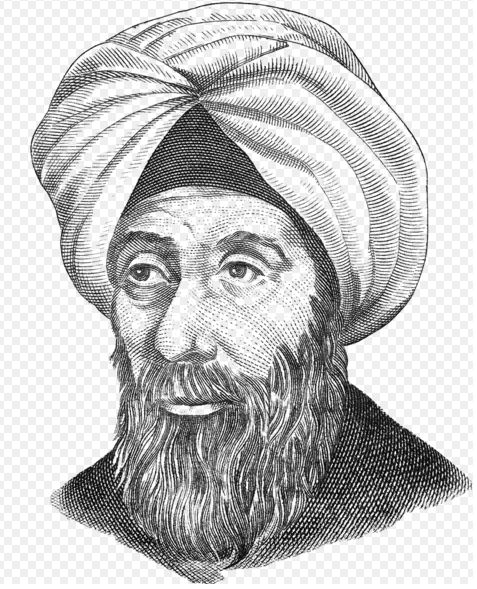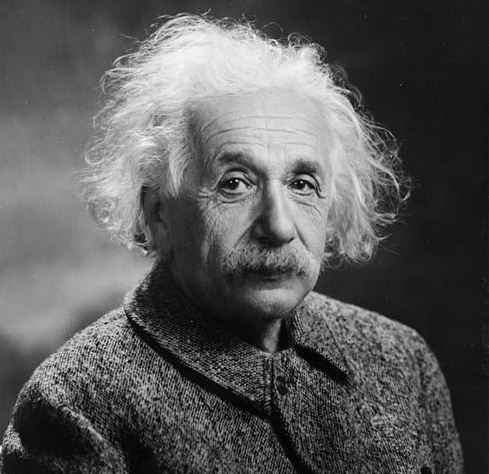Lead me from Darkness to Light
Can you imagine life without light? Light is the essence of life. Ever since the beginning of our existence, the Sun has been showering us with light, and blessing us by providing the clarity for seeing, oxygen for breathing and energy for survival. Light gives us life; darkness is the shadow of death.
Light plays a very significant role in our everyday lives. Through its quantum leap over centuries with varieties of applications in different segments of life, including communication, medicine, culture and entertainment, light has illuminated the whole human society. As an essential linking discipline of science, lighting technology has made our dreams possible resulting in great accomplishments like cameras, projectors, computers, internet, LED lighting, solar panels, X-ray machines, and many more fascinating gifts from its magic casket.
History of Light
As per cosmologists, the universe was evolved after the ‘Big Bang’ that occurred about 13.7 billion years ago. For a period of 380,000 years, known as the Dark Age, the universe kept on expanding and cooling further, till the temperature came down to 4000 degrees, cool enough for the hydrogen, deuteron and helium nuclei to form neutral atoms, thus allowing light to travel great distances. Yes; we are still receiving light, in the microwave domain, that has been travelling over 13.7 billion years!
The Sun, the solar system with all its planets including our mother earth were formed around 4.5 billion years ago. Around two billion years ago, using sunlight in photosynthesis, it was cyanobacteria that produced large quantities of oxygen in the atmosphere, from the carbon dioxide and water, thus allowing the oxygen-breathing life in the earth. Today, plants produce oxygen from carbon dioxide and water and enhance all life forms in the planet with oxygen and food.
Through the course of human evolution, other sources of light were found, starting from the discovery of fire by our ancestors and reaching to the latest artificial light source of electricity. Inventions progressed through incandescent lights, fluorescent lights as well as the light emitting diodes (LED) and the technology advanced with the development of lenses, mirrors, cameras, microscopes and telescopes.
Distance and size no more create barriers to the study of objects. Optical fibers allow transmitting bulk information over long distances through light signals that revolutionized telecommunications and made possible low cost telephone calls, video conferencing and social media within the grasp of our fingertips. Gone are the days of electronics; we are now in the age of photonics, the science of light of the 21st century.
2015 – The International Year of Light
By recognizing the importance of the science of light, the United Nations General Assembly, on 20th December 2013, has declared the year 2015 as the International Year of Light and Light-based Technologies. The International Year is coordinated by UNESCO, African, European and American Physical societies and a large consortium of scientific bodies and will bring together the different participants around the globe under the same platform.
It provides a great opportunity to raise global awareness of light based technologies and provides a common platform to discuss the developments, provide education and training, and offer solutions to global challenges in the segments of energy, health, education and agriculture.
Significant Scientific Anniversaries of 2015
The year 2015 has some specialities as far as lighting technology is concerned. The year is conspicuous by the commemoration of some remarkable events in the history of light, that occurred 1000, 200, 150, 100 and 50 years before 2015.
- In 1015, the great Arabic scientist Ibn al-Haytham published his greatest work on optics, Kitab al-Manazir.
- In 1815, Augustin Jean Fresnel, established the Theory of Wave Optics.
- In 1865, James Clerk Maxwell formulated the Electromagnetic Theory of light
- .In 1905 the Photoelectric Effect, and in 1915 the General Theory of Relativity, by Albert Einstein excited the scientific world.
- In 1965, Arno Penzias and Robert Woodrow Wilson discovered the Cosmic Microwave Background, which was considered as an echo of the 'Big Bang'.
- In 1965, marked the achievements of Charles Kao regarding the transmission of light in fibers for optical communication.
Ibn al-Haytham’s Kitab al-Manazir
Ibn al-Haytham was a great Arabic scientist who was lived in Basra in Southern Iraq, about thousand years ago. He was a scientist who concentrated on his experiments rather than assumptions to record results. Due to his remarkable excellence and experiments in optics he was considered as the Father of Modern Optics and Physics.
His experiments to find out the reason why a moon appeared larger near horizon than when it is higher in the sky (“moon illusion”) led to the concept of Refraction of light. He carried out experiments to study the constituent colours of light and the formation of rainbows and introduced the concept of Dispersion of light. He researched about shadows and lunar & solar eclipses and developed equations on reflection of light from curved mirrors. He demonstrated that vision was possible by reflection of light from an object to the eye.
Kitab al-Manazir (the Book of Optics) was his classic work, consisting 7 volumes, with detailed descriptions of all his works, experiments, apparatus used, measurements and results, based on which he developed classical theories. On the 1000th anniversary of its publication United Nations has declared as the International Year of Light.
Augustin-Jean Fresnel’s Wave Theory of light
Many scientists, including Isaac Newton, in the earlier times believed that light was a stream of particles sent out in all directions from luminous bodies. Some others argued that light was composed of waves. It was in 1815, Augustin Jean Fresnel, the French physicist, presented his Wave theory of light into the realm of physical science.
As per wave theory, light is a continuous series of impulses transmitted in a similar way sound is transmitted through air. Using his experiments, Fresnel proved that wave motion of light waves is transverse. Waves interfere each other in a different manner that can be identified. By polarizing light beams in different planes he showed that the two light beams do not exhibit interference effects.
James Clerk Maxwell’s Electromagnetic Theory of Light
In 1865, James Clerk Maxwell, a Scottish mathematical physicist presented his classical theory of electromagnetic radiation, which brought together light, electricity and magnetism as the expressions of the same phenomenon, all being the waves in the same medium.
Maxwell proved that electric and magnetic fields are in the form of waves, travelling through space at the speed of light and hence it is appeared that visible light is an electromagnetic phenomenon. Now we know that light is really a very high frequency form of electromagnetic radiation. This association of light with the electrical phenomena was helpful to understand the existence of radio waves.
Albert Einstein’s Photoelectric Effect and General Theory of Relativity
In 1905, Albert Einstein declared Photoelectric Effect by describing light as composed of particles called photons. As per Einstein’s theory, energy in each quantum of light was equal to the frequency multiplied by a constant, called Planck's constant. The dual nature of light, as photon as well as wave, was a controversy at that time. This discovery led to the quantum revolution in physics and Einstein was awarded the Nobel Prize in Physics in 1921.
In November 1915, Albert Einstein presented his famous equations of General Theory of Relativity, which has become one of the amazing achievements of the science of the 20th century. It proclaims that the gravitational force actually arises from the curvature of space and time. It is the theory that explains all known gravitational phenomena and survived one hundred years withstanding test of the time.
Its concept, deflection of light by astrophysical objects, was successfully proved by Eddington in 1919, when he observed during an eclipse the effect of Sun on the light coming from a distant star. Today, this tool known as ‘Gravitational Lensing’ is effectively used to explore the universe.
Gravitational ‘Redshift’ is another prediction of this theory, which declares the frequency variation of light when it moves in a gravitational field. In all tests of the theory, light remained central, and that is why Einstein is remembered in this International Year of Light.
Cosmic Microwave Background - Discovery of Arno Penzias and Bob Wilson
Radiations of the Cosmic Microwave Background (CMB) radiation that was released soon after the 'Big Bang' has been travelling eternally throughout the Universe, but cannot be seen by any telescope. It is considered as an echo of the Big Bang. As time passes, this primeval light has weakened substantially and we could now identify it in the microwave realm.
50 years ago, in 1965, scientists Arno Penzias and Bob Wilson of the famous Bell-labs in New Jersey discovered the Cosmic Microwave Background radiation, by chance, when they registered a signal in their radio telescope which was not from any precise source in the sky. It came from everywhere and every time and it was concluded that the signal came from outside our Galaxy; from the origin of the Universe! In 1978, Arno Penzias and Bob Wilson were awarded the Nobel Prize for Physics jointly for their wonderful discovery.
Charles K. Kao and Optical Fiber
Optical fiber transmits light signals over long distances. Discovery of Optical fiber as a telecommunication medium has revolutionized the way people are connected in the 21st century. International Year of Light commemorates Charles K. Kao, also known as the “Father of Fiber Optics”, for his great efforts for providing the world with optical fiber technology.
Through his research and hard work at Standard Telecommunications Laboratories (STL) in England, he found that high purity silica glass is ideal for long range optical communication. He has published more than 100 research papers, more than 30 patents and received several awards. In 2009, he was awarded Nobel Prize in Physics for his outstanding achievements in optical fiber communication.
Conclusion
Life is not possible without light and the light was there from the beginning. We see light and we see with it. Our every moment, and our whole life is fashioned around it. While this spellbinding interplay between life and light continues, starting from the spark ignited by our ancestors, and advancing through different phases of scientific achievements, we have now reached the fascinating era of photonics. The technology is magnificent, opportunities are huge, and the challenges are great. Let us hope we can make the impossible possible.
Image Source: Wikimedia Commons
Like it on Facebook, Tweet it or share this article on other bookmarking websites.




